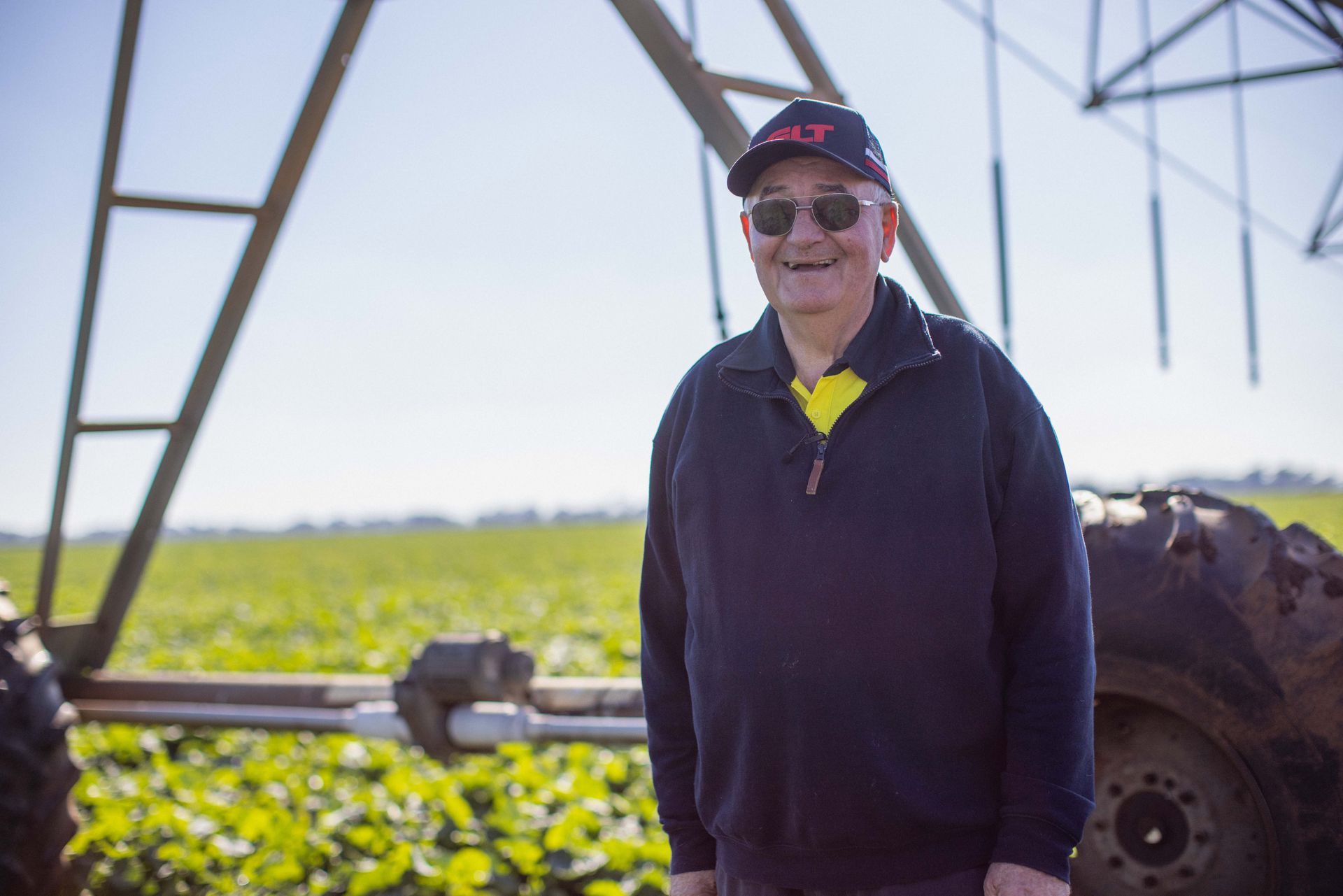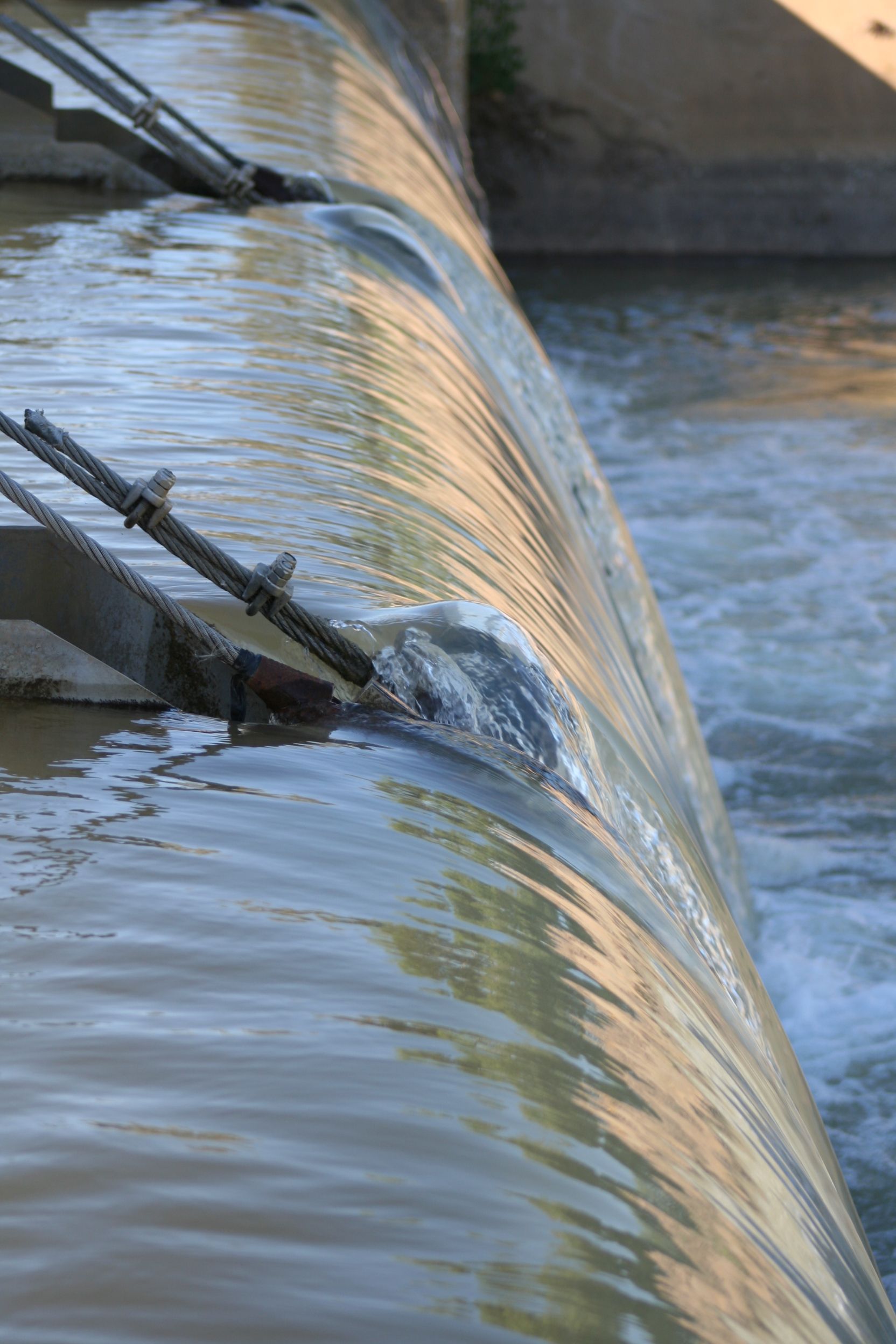30 years of Murray Irrigation

1 July 2025
Irrigators take control of their destiny
This year marks 30 years since Murray Irrigation was privatised from a government owned entity, signalling the birth of the company as we know it today. This article looks at the significant moments leading up to this historic occasion.
A little over 30 years ago, the NSW Government legislated a new model for water distribution.
In May 1994 the NSW Parliament passed the Irrigations Corporation Act, providing a legal vehicle to transfer operations from its Department of Water Resources (DWR) to irrigator-owned corporations.
Across the southern Riverina region, this would result in the DWR withdrawing from its previous role of water distribution and retailing, with those responsibilities transferred to a new entity.
While it marked a defining moment for irrigation in the local region, the journey towards the establishment of this new entity had begun much earlier.
George Warne, the first General Manager at Murray Irrigation Limited, recalls how the transition away from NSW Government ownership and operation had begun as far back as 1987 with the formation of the Advisory Board to the DWR.
Chaired by Barrie Arnold, Members of this Board were drawn from the Southern Riverina Irrigation Districts Council (SRIDC), the lead irrigator representative body across the area.
In mid-1992, Mr Warne started with the ‘commercial arm’ of the NSW Government’s Murray Irrigation, which was part of DWR, firstly in an advisory/consulting role, looking at how the water supply operations and capital expenditure programs were conducted under this commercial arm.
Over the next 12 months this role changed, and a business case was developed for irrigators to take control of the business.
Mr Warne was appointed General Manager in mid-1994.
“The Government and the NSW Treasury at the time strongly supported the development of this business case, as water delivery through state-owned infrastructure including 3,300 kilometres of channels was not seen as a core activity of government,” Mr Warne said.
He explained it was not all plain sailing, saying that “with the exception of one or two leaders at DWR, most within the organisation did not support MIL’s creation and were often very frustrating to deal with”.

Murray Irrigation's first General Manager, George Warne.
Amid some of this reluctance, local irrigator Kel Baxter was appointed Chairman of the Murray Irrigation Management Board, which was tasked with overseeing the privatisation process.
Mr Baxter explained that, at the time, many irrigators were frustrated with DWR, in particular the prices they were paying and the lack of system maintenance.
“We thought there had to be a better way,” he said.
“Some irrigators just wanted the Government to ‘step up’, while others realised we could probably run (the system) better ourselves. It went to a vote and in the end it was carried.”
Mr Baxter acknowledged that not everyone was in favour of privatisation, partly due to a “fear of the unknown”.
However, “we got there … and I think we’ve delivered okay,” he said.
“The scheme today delivers water with minimum losses through a highly mechanised infrastructure”.

Local irrigator Kel Baxter was Chairman of the Murray Irrigation Management Board, which was tasked with overseeing the privatisation process, and was later appointed the inaugural Chair of Murray Irrigation.
Mr Baxter said the process to achieve privatisation took about seven years, and involved a lot of lobbying at local, state and Federal Government level, before the Irrigations Corporation Act was eventually passed in the NSW Parliament in 1994.
After this, it was then up to the irrigators to decide whether they wanted to see the scheme passed from government into private hands.
As Mr Baxter had articulated, at the time many irrigators believed not enough of the money being raised locally through their water charges was being re-invested in the maintenance and upgrade of their irrigation supply system while, simultaneously, the Government was proposing a significant increase in water fees.
The Murray Irrigation Management Board presented the case for privatisation as an opportunity for irrigation autonomy, under the banner ‘Your future, your choices’.
Public meetings were held to provide local irrigators detail on how the existing Class 1 state owned corporation would become a Class 2 company or cooperative.
In the lead up to these meetings, Mr Warne recalls key challenges were maintaining community and farmer support, convincing the Government to provide financial assistance, recognising the system was run-down, and keeping the workforce engaged and on-side.
“MIL’s creation was driven by the (Murray Irrigation Management) Board’s belief that they could run a much better, more efficient business if it was owned by irrigators,” Mr Warne said.
An important meeting of irrigators was held in Deniliquin on December 12, 1994 at which a recommendation to become a Class 2 Irrigation Corporation was overwhelmingly supported, subject to successful negotiations with Government, and the Murray Irrigation Management Board was directed to undertake these negotiations to achieve this goal.
The official decision finally took place at a meeting in Deniliquin on February 14, 1995, when irrigators were asked to vote ‘yes’ or ‘no’ to: ‘I support the Board’s recommendation to move to a Class 2 Irrigation Corporation’.
But this was not before Mr Baxter, in an 'Autonomy Update' to irrigators advised that “the Board and the Government have reached agreement on most issues regarding the future of Murray Irrigation Area and Districts and the proposed move to a Class 2 Irrigation Corporation” and that “we expect the few outstanding issues to be resolved before the Murray Irrigators meeting on 14 February”.
The update further advised: “After a lot of hard work the Board is looking forward to finalising the negotiations in the best interests of all irrigators.”

The well attended meeting on 14 February 1995 voted in favour of the resolution, with Mr Warne saying this demonstrated to the NSW Government that there was overwhelming support for the creation of a new company.
The local irrigation community was now taking control of its own destiny, with Murray Irrigation Ltd officially launched on 3 March, 1995 as an unlisted public company, with 10 elected Board directors.
“The creation of MIL was a hard-fought victory, mainly for the very committed Board members,” Mr Warne said.
“These ‘interim’ Directors worked long and hard, often late into the night at landholder meetings, convincing fellow irrigators to support the creation of the new business.
“Murray Irrigation Limited emerged as a service business committed to advocating for the region and providing affordable irrigation water supply to its customer-owners,” he added.
In essence, privatisation was seen as giving the local community greater control and flexibility in the operation of the irrigation system. The region’s irrigators had control of their destiny.

